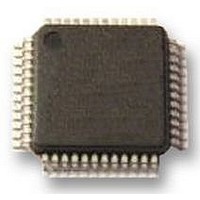DP83848VYB National Semiconductor, DP83848VYB Datasheet - Page 23

DP83848VYB
Manufacturer Part Number
DP83848VYB
Description
TRANSCEIVER, ENET PHY, 10/100, 48LQFP
Manufacturer
National Semiconductor
Datasheet
1.DP83848VYB.pdf
(76 pages)
Specifications of DP83848VYB
Data Rate
100Mbps
No. Of Ports
1
Ethernet Type
IEEE 802.3u
Supply Current
92mA
Supply Voltage Range
3V To 3.6V
Operating Temperature Range
-40°C To +105°C
Digital Ic Case Style
LQFP
No.
RoHS Compliant
Interface Type
MII Serial, RMII
Rohs Compliant
Yes
Lead Free Status / Rohs Status
Not Compliant
Available stocks
Company
Part Number
Manufacturer
Quantity
Price
Company:
Part Number:
DP83848VYB/NOPB
Manufacturer:
NS
Quantity:
570
Company:
Part Number:
DP83848VYB/NOPB
Manufacturer:
Texas Instruments
Quantity:
10 000
4.2.2.1 Digital Adaptive Equalization and Gain Control
When transmitting data at high speeds over copper twisted
pair cable, frequency dependent attenuation becomes a con-
cern. In high-speed twisted pair signalling, the frequency
content of the transmitted signal can vary greatly during nor-
mal operation based primarily on the randomness of the
scrambled data stream. This variation in signal attenuation
caused by frequency variations must be compensated to en-
sure the integrity of the transmission.
In order to ensure quality transmission when employing
MLT-3 encoding, the compensation must be able to adapt to
various cable lengths and cable types depending on the in-
stalled environment. The selection of long cable lengths for a
given implementation, requires significant compensation
which will over-compensate for shorter, less attenuating
lengths. Conversely, the selection of short or intermediate
cable lengths requiring less compensation will cause serious
under-compensation for longer length cables. The compen-
FIGURE 6. 100BASE-TX Receive Block Diagram
23
sation or equalization must be adaptive to ensure proper
conditioning of the received signal independent of the cable
length.
The DP83848VYB utilizes an extremely robust equalization
scheme referred as ‘Digital Adaptive Equalization.’
The Digital Equalizer removes ISI (inter symbol interference)
from the receive data stream by continuously adapting to pro-
vide a filter with the inverse frequency response of the chan-
nel. Equalization is combined with an adaptive gain control
stage. This enables the receive 'eye pattern' to be opened
sufficiently to allow very reliable data recovery.
The curves given in Figure 8 illustrate attenuation at certain
frequencies for given cable lengths. This is derived from the
worst case frequency vs. attenuation figures as specified in
the EIA/TIA Bulletin TSB-36. These curves indicate the sig-
nificant variations in signal attenuation that must be compen-
sated for by the receive adaptive equalization circuit.
30011707
www.national.com











